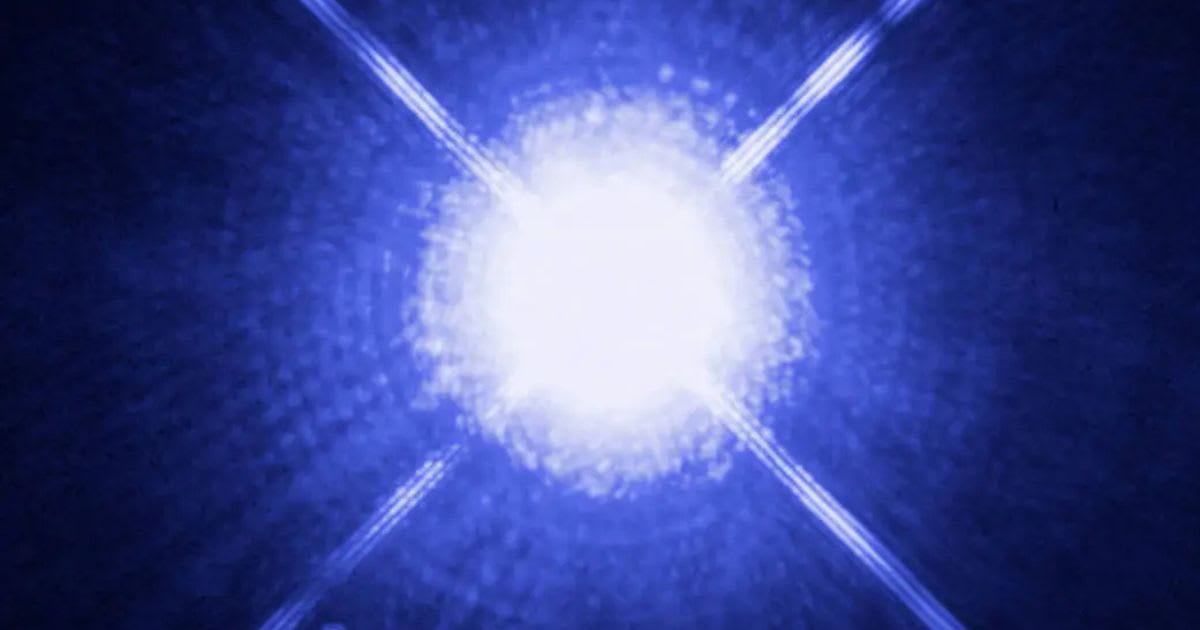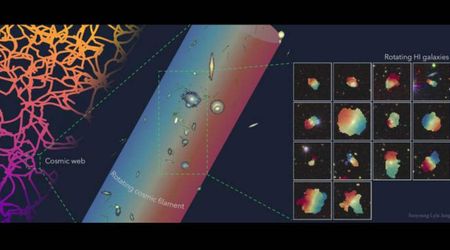Astronomers stumble upon enigmatic dead star blasting out unique radio emissions

A team of astronomers at ASTRON, the Netherlands Institute for Radio Astronomy, has announced the discovery of a mysterious, radio-pulsing white dwarf, making it one of only ten objects ever found. This cosmic source, detailed in the scientific journal Astronomy & Astrophysics, challenges existing theories on how stellar remnants can produce such powerful emissions, according to Astron.

Led by astronomer Sanne Bloot, the research utilized the LOFAR (Low Frequency Array) radio telescope to detect the enigmatic signal. The newly identified source, officially designated ILT J163430+445010, is categorized as a long-period transient (LPT), a type of celestial body that emits radio pulses far more slowly than conventional pulsars. Located thousands of light-years from Earth, this system emits radio pulses every 14 minutes, displaying a striking characteristic: its radio waves exhibit rapid polarization switching, oscillating between circular and linear forms.
Netherlands Institute for Radio Astronomy (ASTRON): Astronomers Uncover White Dwarf System Emitting Bright Radio Pulses With Strange Rhythm https://t.co/Z4d0nO4n5F
— AAS Press Office (@AAS_Press) July 17, 2025
“J1634+44 is unique, even among the small population of long-period transients that have been found so far,” stated Sanne Bloot. “Its rapid polarisation switching, from circular to linear, has never been observed before on any type of object and provides us with a rare opportunity to study the physics behind these bright and perplexing pulses.” To ascertain the nature of the object, researchers integrated radio observations with data from infrared, optical, and ultraviolet wavelengths. Their findings strongly suggest a white dwarf, the superheated, dense core left behind after a star similar to our Sun exhausts its fuel.

Adding to the mystery, the radio pulses arrive in a peculiar, rhythmic pattern: they appear in pairs, but only after the dead star completes multiple rotations without emitting any detectable signals. Astronomers theorize this behaviour indicates the white dwarf is accompanied by another object, possibly another dead star or a brown dwarf, whose magnetic interactions trigger the radio emission. “What is remarkable is that the time between pulse pairs seems to follow a choreographed pattern,” explained Dr Harish Vedantham, an astronomer at ASTRON and co-author of the study. “We think the pattern holds crucial information about how the companion triggers the white dwarf to emit radio waves. Continued monitoring should help us decode this behaviour, but for now, we have a real mystery on our hands.”

Only ten such slow-pulsing radio sources have been identified to date, making each discovery invaluable for understanding their mechanisms. Unlike many previous finds, which were obscured by cosmic dust and stars, ILT J163430+445010 is situated in a relatively clear region of the sky, allowing for detailed study. This breakthrough was made possible through a systematic search for pulses within data from the LOFAR Two Metre Sky Survey, a highly sensitive survey of the northern sky. The team anticipates discovering more such objects as LOFAR continues its survey, potentially providing a conclusive explanation for how dead stars can re-emerge as powerful radio-emitting beacons, as mentioned on Astron.
Notably, J1634+44 was also independently discovered by a team led by Dr. Fengqui Adam Dong using the CHIME telescope. Their research, titled “CHIME/FRB Discovery of an Unusual Circularly Polarized Long-Period Radio Transient with an Accelerating Spin Period”, has been published in The Astrophysical Journal Letters. This discovery underscores the capability of modern radio telescopes to unveil rare cosmic phenomena previously undetectable. Continued exploration by LOFAR is expected to unearth more of these enigmatic, radio-emitting dead star systems, potentially revealing an entirely new population of cosmic objects.









